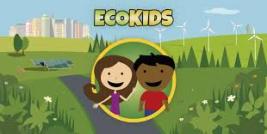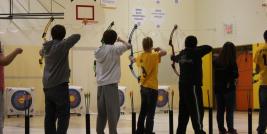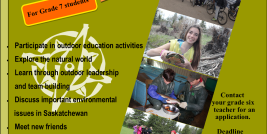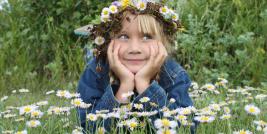The snow studies will be determined by the student's grade, the type of snow and weather conditions at the time.
All materials will be provided for the studies.
Snow Studies List
Winter Ecology Student Checklist
Snow Studies Outdoor Program - Pre-Teaching Ideas
Bring Some Snow Inside
- Bring some snow inside.
- Look at it with magnifiers
- Use it in a sensory box – feel it, smell it, pack it, make different shapes with it, melt it.
- Put some snow in different places: on a dish; on a window ledge; at classroom room temperature; in the fridge; in a pot on the stove. Investigate time it takes each to melt completely.
Discuss How Snow Affect Animals
- Investigation hibernation, migration, animals that change colour, grow thicker coats, or store food when snow is on the ground.
Read Some Books About Snow
- The Four Seasons: Winter by Maria Ruis
- I am Snow by Jean Marzollo
- The Snowy Day by Ezra Jack Keats
- Snow by Christine Ford
- The First Snowfall by Anne and Harlow Rockwell
- Snow is Falling by Franklyn M. Branley
- The Snowball by Jennifer Armstrong
- Geraldine’s Big Snow by Holly Keller
- Or any other stories about snow that you may have.
- Student Story Starter: I am a snowflake, sitting up in the sky in the middle of a cloud. It is almost time for me to…
Explain How Snow is Made
- Snow is made when the air in the sky is so cold that it freezes the water droplets in the clouds. Then the water droplets become frozen ice crystals.
- As temperatures reach freezing, more and more water will collect on the ice crystal. When it gets too heavy, it falls!
- Water comes in three states: solid, liquid and gas. Snow is water in a solid form, rain is water in liquid form, and clouds are water in gas form!
- Each ice crystal (or snowflake) has a different shape, depending on the air temperature and how much water vapor there is. Each snowflake has a shape entirely its own!
- Have students draw some unique snowflakes.
Introduce Students to the Term Subnivean
- Many organisms survive the winter season living in some contact with the snow. The snow world is known as the nivean environment. In general terms, the subnivean environment refers to the area within the snow and the space between the snow and the ground.
- When snow covers the ground it acts like an insulating blanket that prevents some of the natural loss of the earth’s heat. As a result, the bottom snow layers become warmer than the top which are exposed to cold air.
- The snow crystals near the soil break down, and eventually the bottom snow turns into large, coarse, granular crystals. This layer provides many small animals a relatively warm environment where they can easily burrow, travel, and nest while protected from the cold temperatures above. Eventually, an intricate system of runways, tunnels, and burrows develops.
- You can often find holes by trees or shrubs or openings near downed logs, brush piles, or rocks. These are entrances into the subnivean environment.
- Some animals do not migrate or hibernate in the winter, but stay active. Of these animals, only the larger ones are able to withstand extreme cold. The smaller mammals, such as shrews, voles, and mice have such small body masses relative to their body surface area that their metabolism cannot maintain body warmth in freezing temperatures. They go below the snow where it rarely drops below -10°C. There are even some spiders that can remain active in this environment.





